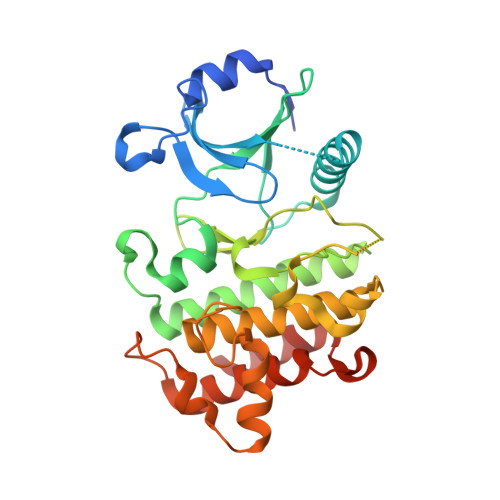Improving metabolic stability and removing aldehyde oxidase liability in a 5-azaquinazoline series of IRAK4 inhibitors.
Degorce, S.L., Aagaard, A., Anjum, R., Cumming, I.A., Diene, C.R., Fallan, C., Johnson, T., Leuchowius, K.J., Orton, A.L., Pearson, S., Robb, G.R., Rosen, A., Scarfe, G.B., Scott, J.S., Smith, J.M., Steward, O.R., Terstiege, I., Tucker, M.J., Turner, P., Wilkinson, S.D., Wrigley, G.L., Xue, Y.(2020) Bioorg Med Chem 28: 115815-115815
- PubMed: 33091850
- DOI: https://doi.org/10.1016/j.bmc.2020.115815
- Primary Citation of Related Structures:
6THW, 6THX, 6THZ, 6TI8, 6TIA - PubMed Abstract:
In this article, we report our efforts towards improving in vitro human clearance in a series of 5-azaquinazolines through a series of C4 truncations and C2 expansions. Extensive DMPK studies enabled us to tackle high Aldehyde Oxidase (AO) metabolism and unexpected discrepancies in human hepatocyte and liver microsomal intrinsic clearance. Our efforts culminated with the discovery of 5-azaquinazoline 35, which also displayed exquisite selectivity for IRAK4, and showed synergistic in vitro activity against MyD88/CD79 double mutant ABC-DLBCL in combination with the covalent BTK inhibitor acalabrutinib.
Organizational Affiliation:
Medicinal Chemistry, Research and Early Development, Oncology R&D, AstraZeneca, Boston, 35 Gatehouse Drive, Waltham, MA 02451, United States. Electronic address: sebastien.degorce@astrazeneca.com.















